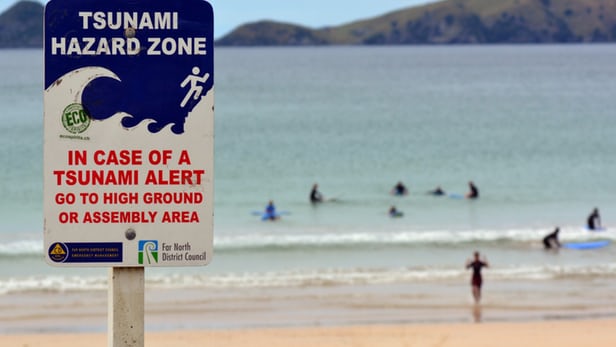Could blasts of sound stop a tsunami?

Acoustic Gravity Waves could theoretically be used to mitigate the effects of tsunamis(Credit: lucidwaters/Depositphotos)
On December 26, 2004 at 00:58 GMT, an earthquake occurred in the Indian Ocean off the west coast of the island of Sumatra. In a single second, many megatons of explosive force were released in the seabed, triggering a series of tsunamis that devastated the coasts of 14 countries and killed up to 280,000 people. Such an act of nature may seem like something that we can only endure and clean up after, but Dr. Usama Kadri of Cardiff University's School of Mathematics believes that it may one day be possible to use acoustic-gravity waves against tsunamis to mitigate or even halt their effects.
Tsunamis are produced by seismic events like earthquakes or underwater landslides; they are ocean shock waves that are thousands of miles long and can span from one continent to another. At sea, they are barely perceptible as ships rise and fall safely at their passing, but when they encounter the shallower waters near land, they turn into deadly aquatic juggernauts that can destroy whole cities and inundate entire regions.
One characteristic of tsunamis is that they generate acoustic-gravity waves (AGW), which are compression waves modified by gravity. Previously Kadri has said he hopes to use such waves that travel through the deep ocean to gain a better understanding of tsunamis and even provide an early warning system of their approach, but now he wants to go one better and use AGWs to combat the tsunamis themselves while they are still far out at sea.
Much as sound waves can be used to combat unwanted sounds in noise-dampening headphones, Kadri's idea is to fire AGWs at incoming tsunamis and disrupt their waveforms to reduce their amplitude. This way, when one reaches shore, the tsunami will be much less powerful and cause much less damage. In fact, if the artificial AGWs could be sent in a series of pulses, it might even be possible to completely disperse a tsunami in midocean.
It's a reassuring vision, and one Kadri worked out mathematically, but he points out that it's very much in the theoretical stage and a long way from practical application – or even demonstrating that it's feasible. To produce such a counter-tsunami system it will first be necessary to build a deep-ocean detector network to track and analyze tsunamis, so a proper anti-tsunami pulse can be configured. Even if this was possible, to generate such AGWs would require sonic transducers of tremendous size and each capable of handling the force equivalent to a nuclear warhead.
"In practice, generating the appropriate acoustic-gravity waves introduces serious challenges due to the high energy required for an effective interaction with a tsunami," says Kadri. "However, this study has provided proof-of-concept that devastating tsunamis could be mitigated by using acoustic-gravity waves to redistribute the huge amounts of energy stored within the wave, potentially saving lives and billions of pounds worth of damage."
The research was published in Heliyon.
Source: